The Back Story: Gays and Sports post-Stonewall; Tom’s Big Idea
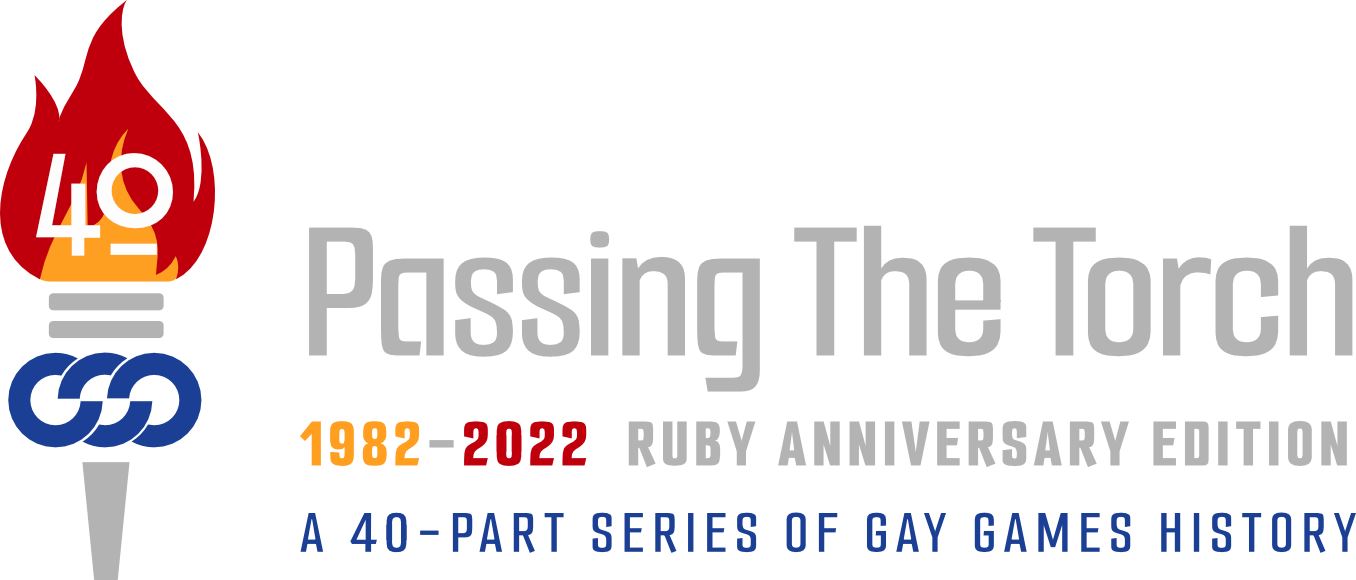
Produced and curated by Federation of Gay Games Archivist Doug Litwin and FGG Honourary Life Member Shamey Cramer
with Ankush Gupta, FGG Officer of Communications.
Read the entire "Passing The Torch" series as it is posted daily HERE.
Post 2 of 40 - 29 July - The Back Story: Gays and Sports post-Stonewall; Tom’s Big Idea
“Passing The Torch: Ruby Anniversary Edition” is a factual timeline of the major events that have been part of the Gay Games evolution since its inception. The series will run from 28 July 2022 - one month before the 40th anniversary of the original Opening Ceremony at San Francisco’s Kezar Stadium - through 05 September, the anniversary of Gay Games I Closing Ceremony. All postings will remain online and available for viewing at the FGG website.
* * *
The initial concept to have a sports and cultural festival open to all was born when Dr. Thomas F. Waddell walked into the Stadium on 12 October for the Opening Ceremony of the Mexico City 1968 Summer Olympics as a member of the U.S. Decathlon team. As he would often state, he felt as if his heart was going to burst; and that it was something everyone should experience. In the end, it wasn’t about where he finished, but the fact he had participated and did his best.
The following year, five women, including “The Frontrunner” author-athlete-activist Patricia Nell Warren, registered and 'crashed’ the Boston Marathon. It wasn't until 1972 that women were finally allowed to compete openly.
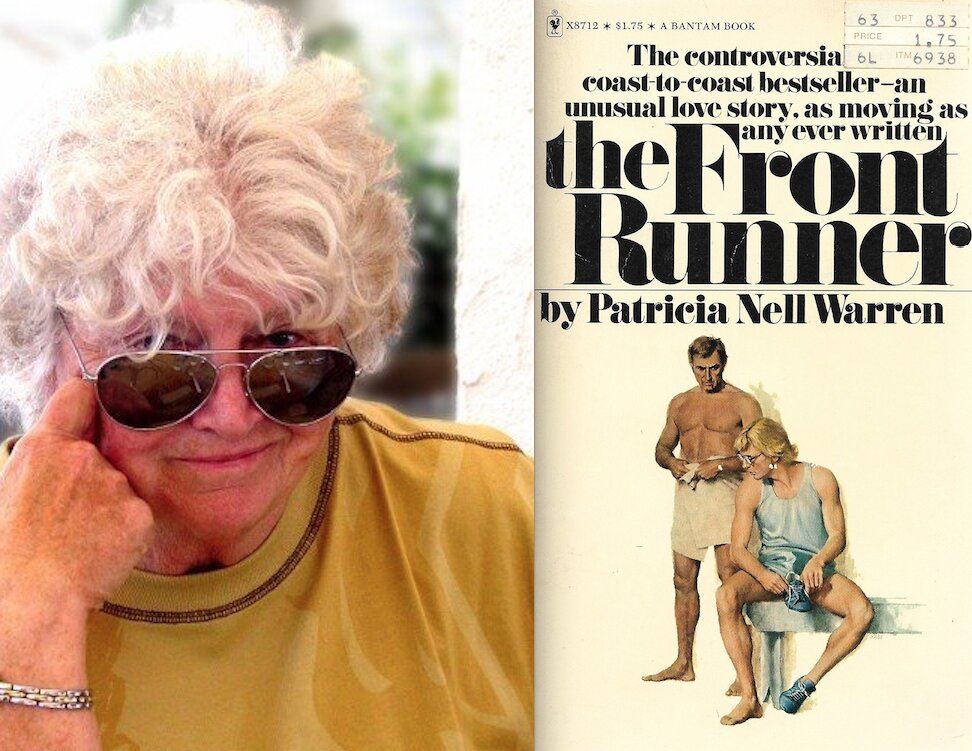
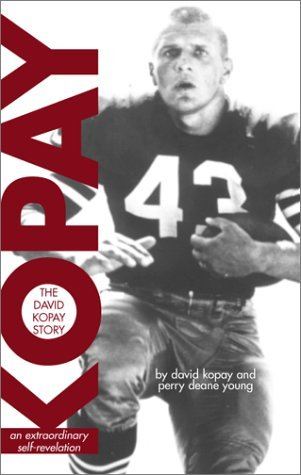
Authors Patricia Nell Warren (L) and David Kopay (R)
.JPG)
David Kopay and Patricia Nell Warren, panelists during Gay Games 30th Anniversary event, 2012 in West Hollywood, CA
Patricia published “The Frontrunner” in 1974, which was followed in 1977 by the autobiography of retired NFL player Dave Kopay, who became the first professional athlete in the United States to come out.
In 1978, California had a statewide ballot known as the Briggs Initiative. It would have banned LGBTQ+ individuals from becoming teachers and educators. In mid-October, as the race was heating up, it was discovered that even if a fellow teacher was heterosexual, and knew of a fellow educator being lesbian or gay and didn’t report it, could also be terminated. Once that became known, Governor Jerry Brown and President Carter both came out against the initiative. Even former Governor Ronald Reagan was against it. Fortunately, it failed, but the campaign had left many people angry on the right. Three weeks later, Harvey Milk and San Francisco Mayor George Moscone were assassinated.
In 1979, the Equal Rights Amendment to the United States Constitution failed to pass, just four states shy of the necessary thirty-eight to ratify. The deadline was extended to 1982, but no new states signed on.
Tom Waddell was named the Outstanding Male Athlete at the annual San Francisco Cable Car Awards in 1981. In his acceptance speech, he stood up and stated: “Wouldn't it be great if San Francisco hosted a Gay Olympics and invited the rest of the world?” He naturally received a rousing cheer, which also meant he needed to put his money where his mouth was – and that he did!
In 1981, the Family Protection Act was introduced in the U.S. Congress to strengthen “traditional family values.” It required the withdrawal of federal funds from any state program that provides contraceptive or abortion services or information to unwed minors without prior parental notification, or from any entity engaged in "advocating, promoting, or suggesting homosexuality, male or female, as a life style."' The bill also mandated the withdrawal of federal funds from any agency that excludes parents or unspecified "representatives of the community"' from participation in curriculum decisions relating to the study of religion; requires union membership of teachers; or prohibits "parental review of textbooks prior to their use in public school classrooms.”
These were some of the key touch points that set the stage for the emerging LGBTQ+ community as a political movement. Thus, when Tom announced there would be a Gay Olympics Games, one can only imagine how much of an affront that must have been to the United States Olympic Committee.
* * *

Gay Games Co-Founder Mark Brown
MARK BROWN: I got involved with sports in San Francisco after meeting my room-mate Paul Lynch in 1974. First, he introduced me to softball and I ended up becoming the league commissioner in 1978-79. I also served as co-chair for the first Gay Softball World Series.
Paul also got me involved with the gay bowling league, and I ended up serving as President of the Tavern Guild Bowling League at the Park Bowl on Haight Street. I had also won several Cable Car Awards for my column On The Mark which was published in the Bay Area Reporter.
Tom Waddell showed up one night at the Wednesday night bowling league during the 1979-80 season, wanting to join a team. Given all the administrative work I was handling for the league, I had Tom join our team, and I became the substitute bowler. We won a lot that year.
* * *

Gene Dermody on the wrestling mat at Gay Games I
GENE DERMODY: I have invested forty years of my life into the Gay Games as a wrestler, volunteer, a Federation of Gay Games (FGG) delegate, Officer of Sport, Officer of Technology, and twice-appointed Co-President. I have competed in all 10 Gay Games, have created and organized teams to go to Gay Games, and in 2014, was awarded the Tom Waddell Award, the FGG’s highest recognition for service to the Gay Games.
I had “come out” around the time of the Stonewall riots while at NYU. I lived in Manhattan, first in Greenwich Village, and then on the Upper West Side, where I was resigned to living in an LGBT culture I found devoid of good choices.
I had been a wrestler at NYU in the ‘60s, and a high school Chemistry/Physics teacher and wrestling coach in northern New Jersey in the ’70s. There were very few adult post-collegiate amateur wrestling opportunities. There were the handful of YMCAs like my NYC Lincoln Center McBurney, and some university teams like Olympian Dave Schultz’s at Stanford University.
LGBTQ+ athletes were routinely shadow banned for various reasons, depending upon where you lived. I was lucky to compete for an enlightened YMCA in the ‘70s. Unlike today where there are martial arts/grappling dojos on every corner, there were no opportunities for the vast majority of adult LGBTQ+ athletes. For the vast majority, not having a local practice option that in turn precluded competitions, was a vicious cycle, because it also impacted social connection opportunities.
This pent-up athletic/social frustration was quite real, and for LGBTQ+ athletes who built their social circles around carefully trusted connections, it was especially not healthy: isolation breeds depression. It is why sports are still so important a socializing factor, regardless of age.
* * *
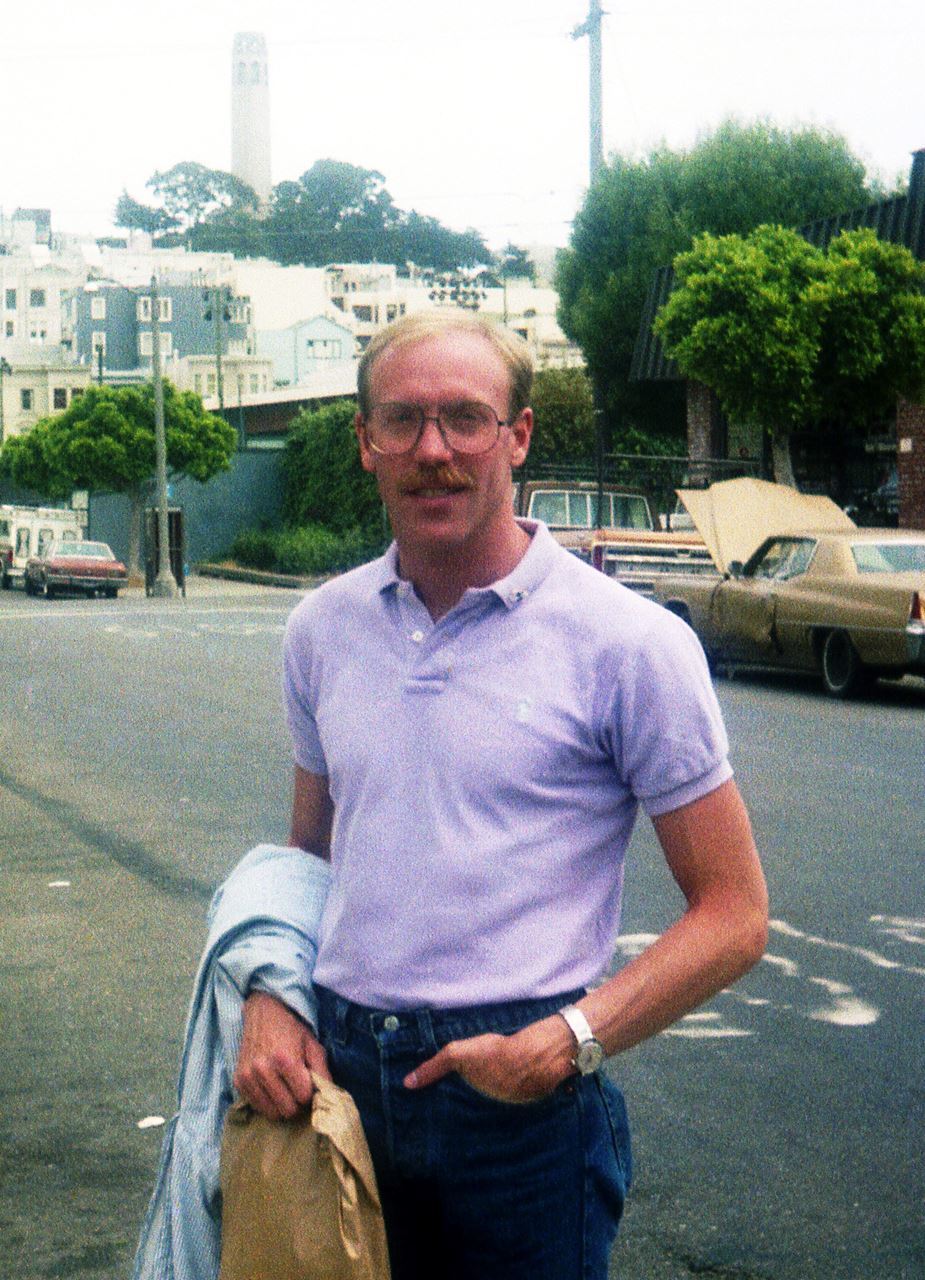
Charlie Carson at Gay Games I, 1982
CHARLIE CARSON: Before Gay Games I, what we then called the gay and lesbian community had sports in larger cities like softball and bowling leagues. Bar pastimes were activities where you could smoke and drink at the same time: darts; billiards. There were a few volleyball groups in Europe and the U.S., and road running was taking off through the Front Runners. But we had no Gay or Lesbian swim teams; no track meets; no wrestling; no cycling. The Gay Games changed that, creating a network of an initial 1,300 participants who spurred the creation of hundreds of what are now the LGBTQ+ community’s long-established sports groups. And lucky me – I was there!
* * *
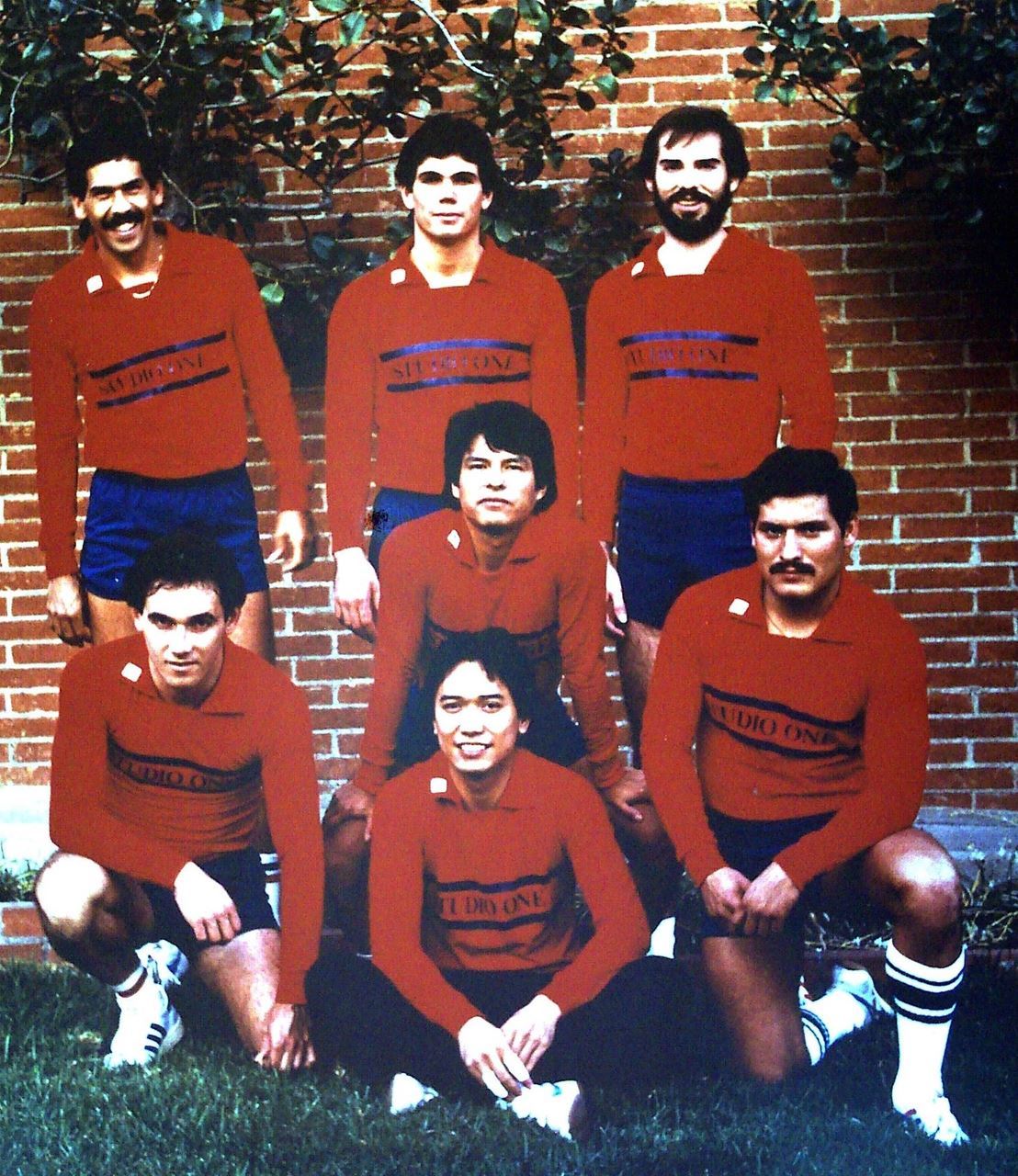
Jack Gonzalez (center) and his Studio One volleyball team
JACK GONZALEZ: I started playing "Gay" volleyball sometime in 1978. I had been playing Club Volleyball in Long Beach when I heard there was a gym in West Hollywood where mostly Gay people played (West Hollywood Park). After work on Thursday nights, I would drive up to play with "my people." The level of play was very mixed. Without sounding vain, I would say I was probably one of the better players (I was playing 4-5 hours a night 4 nights a week with the Club). It was such a wondrous and joyful feeling to be playing my favorite sport with others like me. I was one happy camper, and I was also making new friends as well.
After play in West Hollywood Rec Park, I would stay and "go dancing" at Studio One. Eventually the "good players" started to gravitate towards each other to play together. It was more fun (but not always fair) to have skilled players on your team. The following year a league was started. It was really a "Gay league," but we were trying to be inclusive, so all were invited. Teams were sponsored by local bars and businesses. A fan, Bob Jory, volunteered to be our manager. He went to see Scott Forbes from Studio One, which is how Studio One became our sponsor! Bob was not a player, but he enjoyed doing the legwork for the team. Studio One was our sponsor (great volleyball uniforms) until 1981. By then the Gay Games were scheduled to be in San Francisco the following year.
By 1982, I ran the team that represented Los Angeles in tournaments (Chicago, San Diego, Seattle, etc.). Back then, these tournaments required that a player had to play for the city they lived in [historic note: West Hollywood wasn’t incorporated until 1984]. Our team was the team to beat. We took first or sometimes second place in these tournaments. At the beginning this Gay volleyball organization was known as NAVA (North American Volleyball Assoc.). The G (for Gay was added) after a couple of years.
* * *
.jpg)
.JPG)
Jim Hahn (L, on left) (R, second from left) receiving his doubles medal at GGVIII (with partner Doug Litwin) and team bowling medal at GGIX (with teammates Glenn Normandin, Andrew Meagher, and Doug Litwin)
JAMES HAHN: My name is Jim Hahn and I live in San Mateo, California (about 35 km south of San Francisco). Doug Litwin and I have been bowling together for more than 20 years. I am one of the few people left who have participated in every Gay Games, beginning in 1982.
My participation started because of a gay students’ conference at the California State University at San Francisco that was held in the Spring of 1981. One of the group events at the conference was a meeting with Dr. Tom Waddell. There were about 6 to 8 of us in the room and it was an opportunity for Tom to share his vision of the Gay Olympics and encourage participation.
I was impressed with Tom's clarity of vision and doubtless enthusiasm that the Olympics were going to happen just as he had imagined them. I was listening closely and intently, because beyond the words that Tom shared with us, I could sense history in the making. By the time the meeting was over, I was certain that the Olympics were not going to be a “flash in the pan” where after one or perhaps two events, they would fade away.
No, this was the beginning of something bigger. Bigger than Tom, certainly bigger than me; bigger even than San Francisco itself. I knew that this was something I needed to be a part of. Indeed, the Gay Olympics became part of me.
As I left the meeting, my mind went into overdrive trying to figure out how a poor college student with no car was going to be able to make the leap into history. I had my bowling ball and access to mail and that was about it.
Several months later, I received my Gay Olympics application which went from envelope to typewriter in the blink of an eye. I also studied the requirements for participation. A shirt, preferably with my city of representation on the back and a Gay Olympics patch on the sleeve was required. Thankfully, hosted housing (Thank you JJ!) was offered and I was accepted. The next step was to buy a shirt, have it embroidered and arrange a ride from Davis to San Francisco (about 100 miles or 180 Km). The cost of the shirt with the embroidery was $28 or a little less than a month’s spending money for me.
Tom’s primary focus of the Gay Olympics was for participants to compete against other like-minded and like-talented individuals and teams and perform their personal best. The medals are certainly nice and worth striving for, but the fact that everyone receives a participation medal, made this very different from other sporting events. In fact, I have won several the years (five, I think), but I have a complete set of participation medals from Gay Games II (more on this name change later) through to Gay Games X. These mean more to me than the silvers and bronzes I have won.
* * *
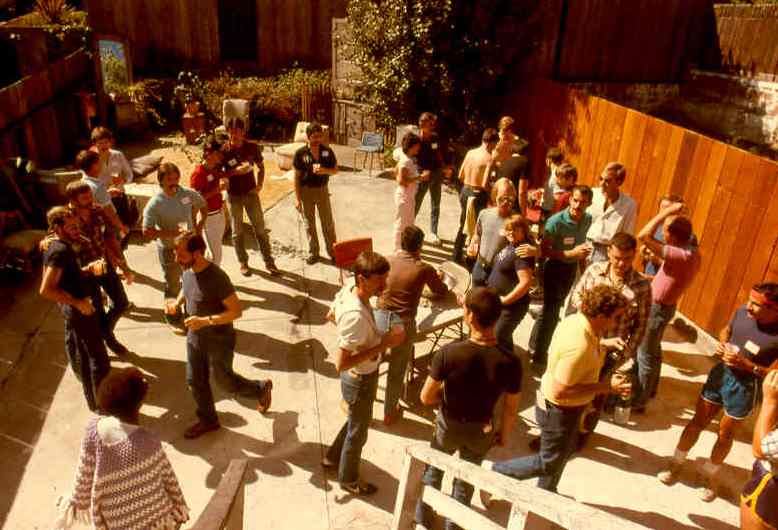
The backyard party with members of the SF and LA Bands, June 1979
KEN WARD: The San Francisco Gay Freedom Day Marching Band and Twirling Corps marched in the Great American Yankee Freedom Band of Los Angeles for their Pride Parade on June 30, 1979, one year after our founding. And the concert afterwards was at Hollywood High School auditorium at 8:00 that evening.
The party afterwards was at a very small house with an also very small backyard. Everyone was very rowdy and having a great time until a Los Angeles Police Department helicopter arrived and hovered over the party site for quite some time. We were all getting nervous about what they would do, but the yard was very tiny and surrounded by a wooden fence, and packed full of queens and friends. We got quiet and worried when wondering what they were going to do. They certainly could not land in that postage stamp walled backyard without committing mass slaughter and very bad headlines the next day.
After a while we were very pleasantly surprised when someone on a microphone on the helicopter welcomed the San Francisco Gay Freedom Day Marching Band and Twirling Corps to Los Angeles. Then we erupted into cheers and toasts for the LAPD. That was a big change in police relations with the gay community from what most of us had heard about and/or experienced previously.
* * *
Read the entire "Passing The Torch" series as it is posted daily HERE.
